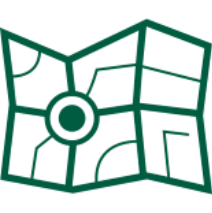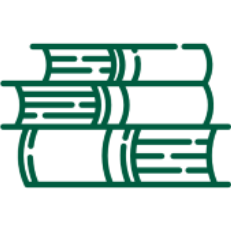Statement on the legality of timber originating from Russia
Updated 09 November 2022
As part of the 8th round of sanctions (6 October 2022), via Council Regulation (EU) 2022/1904 of 6 October 2022 amending Regulation (EU) No 833/2014 concerning restrictive measures in view of Russia's actions destabilising the situation in Ukraine, the EU added additional pulp and paper customs codes to the list of prohibited products for import, as outlined in Annex XXI of the regulation. These include:
• 4703 chemical wood pulps
• 4801 newsprints
• 4802 uncoated paper and paperboards
• 4803 toilet or facial tissue stock, towel or napkin stock and similar paper for household or sanitary purposes
• 4805, 4810, 4811 various paper and paperboard types
• 4818 toilet paper and similar papers
• 4819 cartons, boxes, cases, bags and other packing containers, of paper, paperboard
• 4823 paper, paperboards
Prohibition of the new CN codes begins as of 7 October 2022, however it does not apply to contracts concluded before 7 October 2022, until 8 January 2023.
Updated 08 May 2022
On 8 March 2022, Russia enacted a ban on the export of certain goods outside the territory of the Russian Federation to a list of countries including the EU Member States. The ban covers four HS codes (4401 21, 4401 22, 4403 and 4408) and will be in force until 31st December 2022. These products, imported from Russia, would be considered as illegal if placed on the EU market.
A military conflict involving the Russian invasion of Ukraine has taken place with the support and collaboration of Belarus authorities.
On 08 April 2022, the European Union approved a fifth round of sanctions against Russia , which includes specific product-import prohibitions. Wood-products are included as one of the products. The detail of the sanctions can be found in Council Regulation (EU) 2022/576 of 8 April 2022 amending Regulation (EU) No 833/2014 concerning restrictive measures in view of Russia’s actions destabilising the situation in Ukraine.
The list of wood-products to which the prohibition is applicable can be found in Annex XXI of the regulation, and includes the following EU Customs (CN) codes:
- All Chapter 44: Wood and articles of wood; wood charcoal
- 4705: Wood pulp obtained by a combination of mechanical and chemical pulping processes.
- 4804: Uncoated kraft paper and paperboard, in rolls or sheets, other than that of heading 4802 or 4803
- 9403: Other furniture and parts thereof
Chapter 44 is wide-ranging and includes customs codes for many wood-products, including round logs, sawn timber, biomass, plywood and composite boards, among others. 9403 is also a major customs code for many types of furniture. The scope of sanctioned products is similar to Annex 1 of the EUTR, although some customs codes in relation to pulp and paper products appear to be excluded. According to this regulation, it is prohibited to:
- purchase, import or transfer (directly or indirectly) the wood-products listed above into the European Union if they originate in Russia or are exported from Russia (Article 3i, Paragraph 1).
Additionally, the regulation (Article 3i, Paragraphs 2a/b) adds additional prohibitions to:
- provide technical assistance, brokering services or other services related to the listed wood-products, and to the provision, manufacture, maintenance and use of those wood-products, directly or indirectly in relation to the prohibition.
- provide financing or financial assistance related to the listed wood-products for any purchase, import or transfer of those wood-products, or for the provision of related technical assistance, brokering services or other services, directly or indirectly in relation to the prohibition.
It is important to note that the prohibition on imports refers both to wood-products originating in, or exported from, Russia. Also, the prohibitions in paragraphs 1 and 2 do not apply to contracts concluded before 9 April 2022, until 10 July 2022.
For wood-products excluded from sanctions, risk assessments for wood-products of Russian origin, should include consideration of the prevalence of armed conflict. Risk assessments should also take into account the possibility that individuals or entities which have been sanctioned by the EU, are owners or beneficiaries of forest-sector industries within the supply chain. The list of sanctioned individuals and entities is growing over time.
Recent statements from PEFC and FSC have stated that wood products sourced from Russia can be interpreted as conflict timber, or at least that this risk exists. PEFC categorizes timber from Russia as “conflict timber” while the FSC Controlled Wood Risk Assessment for Russia states that “…any forestry activities are inherently associated with violent armed conflict that threatens national and regional security…” and that there is a risk that “…Operators in the area under assessment are involved in conflict timber supply/trade”. Companies considering sourcing from Russia, may wish to consult the European Commission guidance on the prevalence of armed conflict and sanctions in Due Diligence Systems . FSC and PEFC-certified (or controlled) material will cease to be available from Russia.
Given the situation and challenges described above, the prevailing views expressed by several EUTR Competent Authorities is that it would be extremely arduous for operators sourcing timber/timber derived products from Russia, to carry out a full risk assessment of illegality or to mitigate the non-negligible risk.
Note on the EU export prohibition to Russia
Council Regulation (EU) 2022/576 also includes specific product-export prohibitions. Wood-products are included among the list of products subject to an export ban. This list can be found in Annex XXIII of the regulation, and includes selected customs codes from each of the following European (CN) Customs Code chapters:
- 38 Miscellaneous Chemical products (specifically 3807 00)
- 44 Wood and articles of wood; wood charcoal (specific species included, in some cases)
- 45: Cork and articles of cork
- 47: pulp of wood or of other fibrous cellulosic material; recovered (waste and scrap) paper or paperboard
- 48: Paper and paperboard; articles of paper pulp, of paper or of paperboard
- 9403 30 Wooden furniture of a kind used in offices
- 9406 10 Prefabricated buildings of wood
Chapter 44 is wide-ranging and includes customs codes for many wood-products, including round logs, sawn timber, biomass, plywood and composite boards, among others. 9403 is also a major customs code for many types of furniture. This scope of products differs in some respects - and also extends beyond - Annex 1 of the EUTR.
According to this regulation, it is prohibited to:
- sell, supply, transfer or export, directly or indirectly, the wood-products listed above, to any natural or legal person, entity or body in Russia or for use in Russia (Article 3k, Paragraph 1).
Additionally, the regulation (Article 3k, Paragraphs 2a/b) adds additional prohibitions to:
- provide technical assistance, brokering services or other services related to the listed wood-products and to the provision, manufacture, maintenance and use of those the wood-products, directly or indirectly to any natural or legal person, entity or body in Russia or for use in Russia;
- provide financing or financial assistance related to the listed wood-products for any sale, supply, transfer or export of those the wood-products, or for the provision of related technical assistance, brokering services or other services, directly or indirectly to any natural or legal person, entity or body in Russia, or for use in Russia.
The prohibitions in paragraphs 1 and 2 do not apply to contracts concluded before 9 April 2022, until 10 July 2022.
Guidance:
For companies based in the European Union:
- Cease to source/import into the EU wood-products traded under HS codes (4401 21, 4401 22, 4403 and 4408), based on Russia export ban.
- Based on EU Council Regulation 2022/576, cease to purchase, import into the EU or transfer (directly or indirectly) wood-products under the following HS codes, if they originate in Russia or are exported from Russia:
o 44 Wood and articles of wood; wood charcoal
o 4705 Wood pulp obtained by a combination of mechanical and chemical pulping processes.
o 4804 Uncoated kraft paper and paperboard, in rolls or sheets, other than that of heading 4802 or 4803
o 9403 Other furniture and parts thereof
- According to the EU Timber Regulation, for products containing wood which are not covered by the EU prohibition on purchases or imports from Russia, due diligence needs to be applied on imports. Companies must assess risks in relation to the prevalence of armed conflict, including the risk that funds derived from harvesting/trade fuel the outbreak - or continuation - of violent conflict or other gross violations of international humanitarian law. Companies must also evaluate the risk of sanctioned individuals or entities being owners or beneficiaries of forest industries in their supply chains. However, Operators are advised to heed the following guidance:
- The Ninth meeting of the Multi-Stakeholder Platform on Protecting and Restoring the World’s Forests, including the EUTR/FLEGT (29April22) concluded that, in the present circumstances, “it is impossible for operators – sourcing timber from [Belarus] – to carry out a full risk assessment and to effectively mitigate the non-negligible risk of acquiring illegally harvested timber”. The prevailing view of national (EUTR) competent authorities was expressed such that operators “refrain from placing on the EU market for the first time all timber harvested in [Belarus] and timber products from there”
- EC guidance on armed conflict and sanctions in Due Diligence Systems
- Summary record of the Eighth Meeting of the Multi-Stakeholder Platform on Protecting and Restoring the World’s Forests, including the EUTR/FLEGT (16March22)
- The purchase of wood-products and the related payment should not be making funds directly or indirectly available to one of the sanctioned entities or individuals. When a company is owned or controlled by a listed individual (oligarch), no transactions should be carried out with the company as this would be considered as making funds indirectly available to this listed person. Preferred by Nature notes that obtaining information on the ownership (including beneficial ownership) and corporate structure of suppliers and their affiliates – as well as understanding whether payments have been made to sanctioned individuals is extremely challenging.
For companies exporting to Russia:
- Based on EU Council Regulation 2022/576, cease to sell, supply, transfer or export, directly or indirectly, wood-products under the HS codes listed in Annex XXIII of the regulation, to any natural or legal person, entity or body in Russia or for use in Russia.
For companies based outside of the European Union:
- Carefully monitor the situation, and exercise additional caution in their due diligence process, if timber is being sourced from Russia.
- Although companies sourcing from Russia may not be bound by the EU Timber Regulation or EU-imposed sanctions, other regulations (Lacey Act, Australian Illegal Logging Prohibition Act, etc…) may apply. Also, wood-products from Russia may be covered by sanctions imposed by other countries. Robust due diligence requires that companies should still assess risks in relation to the prevalence of armed conflict, as well as the risk that sanctioned individuals or entities being also owners of forest industries.
Risk Assessment and tools available in Russian:
- Европейская часть России-Оценка рисков легальности древесины (Risk Assessment, V1.0, 2021)
- Россия Европейская часть Руководство по снижению рисков (Risk Mitigation Guide, V1.0, 2021)
- Российская Федерация - Перечень применимого законодательства (List of Applicable Legislation, V1.0, 2021)
The Timber Legality Risk Assessment contains an evaluation of the risk of illegality in the European Part of Russia for five categories and 21 sub-categories of law. We found:
- Specified risk for 10 sub-categories.
- Low risk for 9 sub-category.
- No legal requirements for 2 sub-categories.
This page provides an overview of the legality risks related to timber produced in the European Part of the Russian Federation covering the regions of the Central Federal District and the Northwestern Federal District of the Russian Federation.
The Central Federal District includes 18 constituent entities of the Russian Federation: Belgorod, Bryansk, Vladimir, Voronezh, Ivanovsk, Kaluga, Kostroma, Kursk, Lipetsk, Moscow, Oryol, Ryazan, Smolensk, Tambov, Tver, Tula, Yaroslavl regions and the city of Moscow. The Northwestern Federal District includes 11 constituent entities of the Russian Federation: Arkhangelsk, Vologda, Kaliningrad, Leningrad, Murmansk, Novgorod, Pskov regions, the Nenets Autonomous District, the Republic of Karelia, the Komi Republic, the city of St. Petersburg.
The two districts cover 13,65% of the territory of the Russian Federation and accounts for about 25% of the Annual Allowable Cut (AAC) in Russia.
The key activity of the timber sector of the Central Federal District is the production of high value added products: plywood, wood-based panels, furniture, while the Northwestern Federal District is represented by a full range of industries: logging, pulp, and paper industry, production of wood-based panels, and furniture.
All forests are state-owned but companies are entitled to utilise the forest resources of the state.
Several legality risks related to timber supply chains were identified in the Preferred by Nature Timber Legality Risk Assessment for the European part of Russia in 2021. The risks are wide ranging and relate to legal rights to harvest, taxes and fees, timber harvesting activities, risk that the implementation of harvesting regulation is lacking, third parties’ rights, and trade and transport. However, fewer indicators evaluated were associated with risks compared to the 2017 risk assessment for all of Russia.
Score: 29 / 100 in 2021
Rank: 136 out of 180 countries in 2021
Logging ban: Ban on logging Korean pine
(Relevant for all of the Russian Federation).
Under revision
CITES appendix II: Taxus cuspidata
CITES appendix III: Fraxinus mandshurica, Pinus koraiensis, Quercus mongolica
FSC Certified Forest Area: 61,528,588 hectares (September 2021)
PEFC Certified Forest Area: 31,953,891 hectares (June 2021).
Numbers only available for all of the Russian Federation
Information Gathering
Timber sources
- Find out the different sources of legal timber.
- Determine which source type your timber comes from.
- Find out the main documents that can be used to indicate legality throughout the supply chain
| Timber source types | Description of source type |
|---|---|
|
Concession (Long term use) |
Areas leased out under a Forest Concession Agreement. The timber harvested on such areas is the property of the lessee. Lease term from 10 to 49 years. |
|
Short-term use |
Valid up to one year. There are three types of Short term use (see below), depending on main purpose of harvesting and actors involved. The harvested timber can be sold commercially, regardless of whether it has been harvested for the main purpose of commercial harvesting, or for protection and regeneration of forests.
State Assignments are legal relationship arising between the founder (Government) and subordinate institutions. Funds for this assignment are subsidies. These amounts are provided in accordance with the Resolution of the Government of the Russian Federation of 02.09.2010 N 671 |
| Rosimushestvo (Federal Property Management Agency) |
Forest areas assigned for the use of forests under the Forest Concession Agreement for the purposes of: The main purpose is not for harvesting, but in some cases, timber harvesting is allowed when carrying out works related to the construction, reconstruction and operation of linear facilities without allocation of forest areas. In this case, timber harvesting can be carried out both with and without the registration of an easement. If an easement has been registered, the same permits as for concession shall be in place. In case harvesting is carried without the registration of an easement, no harvesting permits are required by the legislation. Timber is harvested by contractors and remains the property of the state (Federal Property Management Agency (Rosimushchestvo)) |
| Permanent (unlimited) use |
Forest areas are assigned for an indefinite period on the basis of a Permanent (Unlimited) Use Agreement between the Prison Service and an executive authority with a constituent entity of the Russian Federation. |
Risk Assessment
Risk Assessment Summary
|
Legal rights to harvest |
|
Taxes and fees |
|
|
Timber harvesting activities |
|
|
Third parties’ rights
|
|
Trade and transport |
|
Specified risk species
| Common/trade name | Scientific name | Risk information |
|---|---|---|
|
Mongolian oak |
Quercus mongolica |
CITES-listed |
|
Korean pine |
Pinus koraienses |
CITES-listed |
| Manchurian ash | Fraxinus mandshurica | CITES-listed |
Risk Mitigation
Mitigate the risks in your supply chain
Learn which detailed actions we recommended to mitigate the risks associated with the timber sources from the European Part of Russia by looking at our Risk Mitigation Guide (Available in English and Russian).
Mitigation recommendations
There are five generally recommended actions to mitigate the risks associated with the timber sources from Russia:
1. Fully map your supply chain
- Our supply chain mapping tool can help you do this.
2. Obtain and verify documents
3. Consult with stakeholders
4. Carry out on-site verification
5. Conduct targeted timber testing
- Conduct timber testing on samples of purchased material to verify the species or origin of timber, where appropriate












